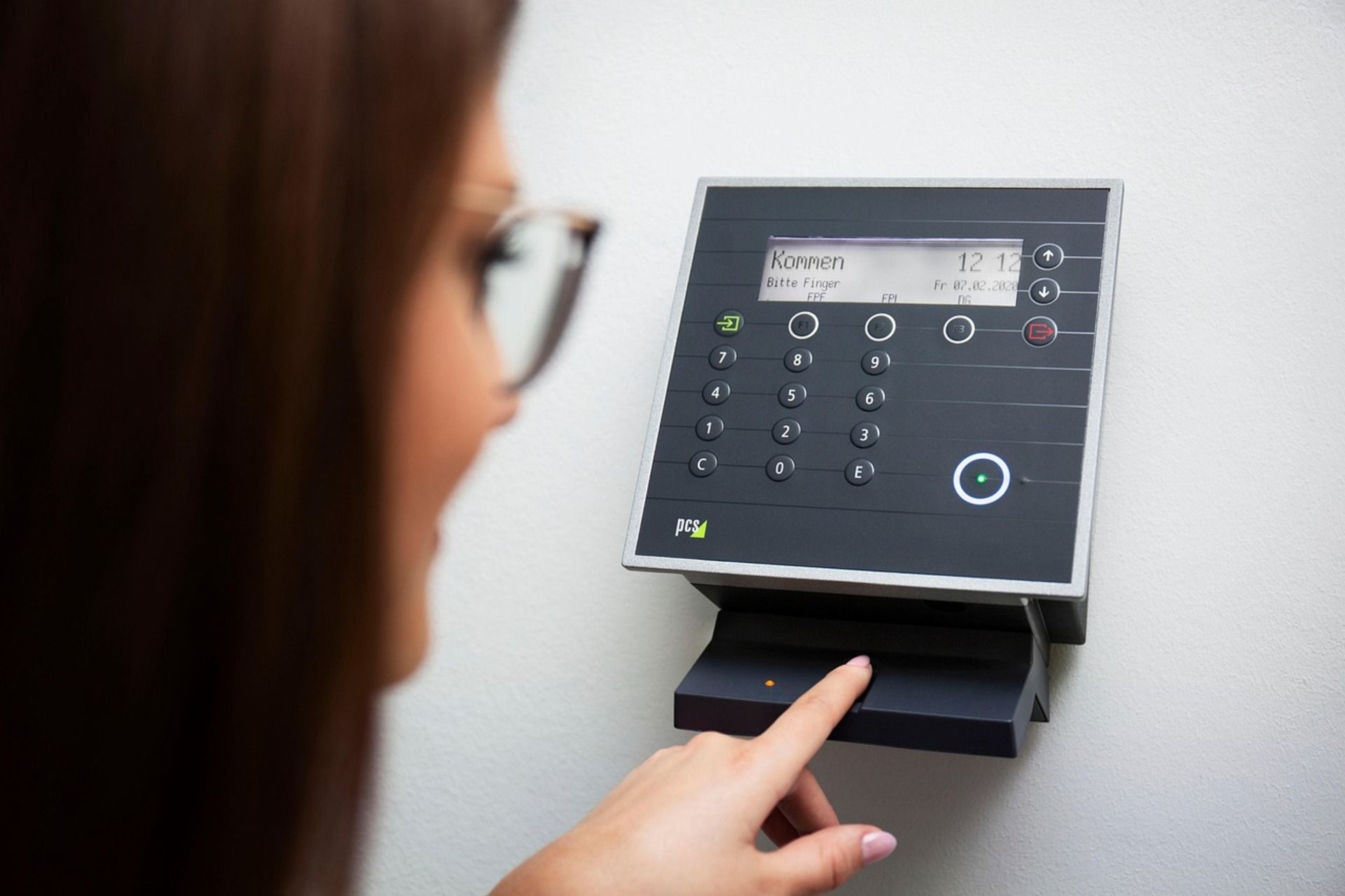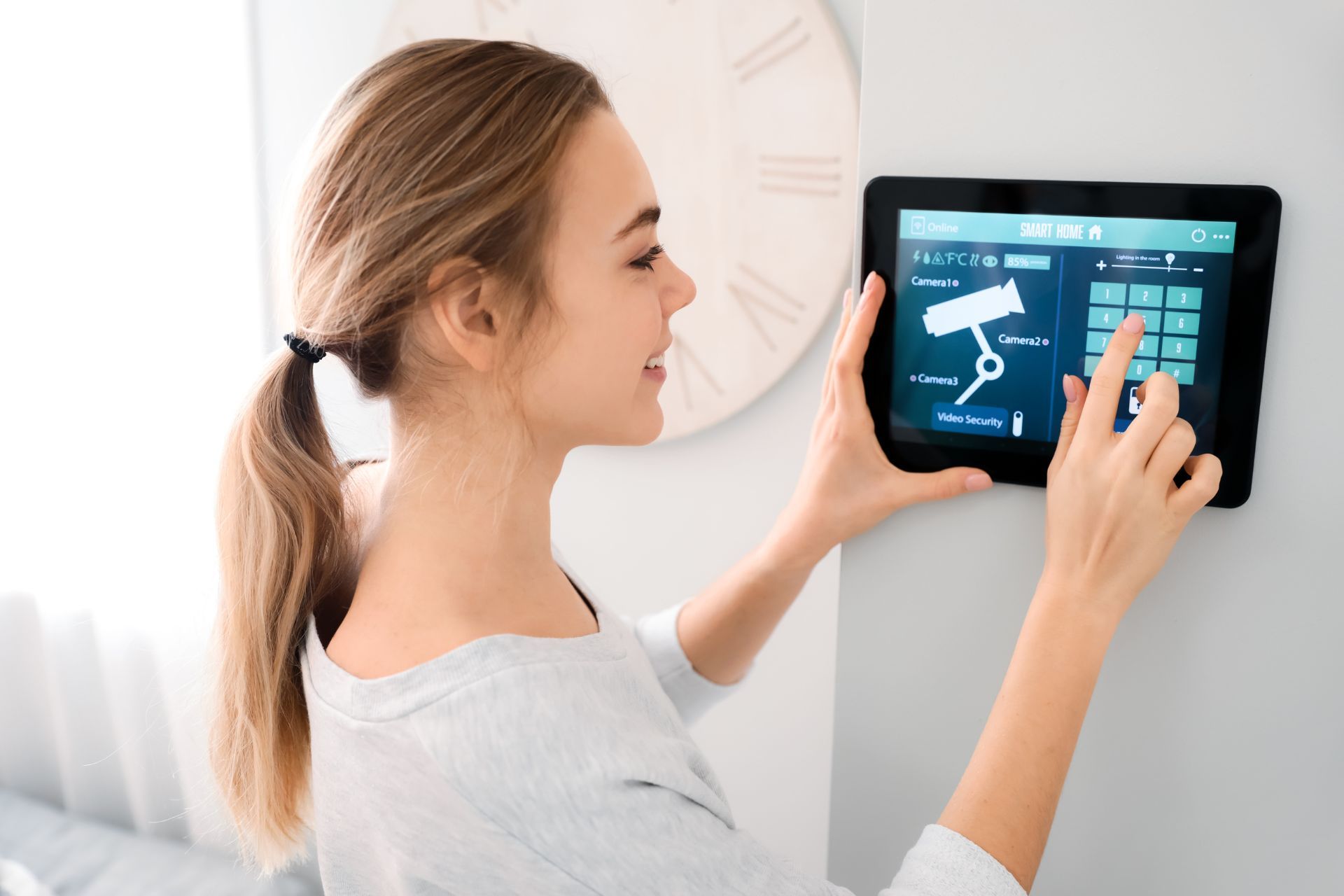A Complete Guide to Smart Homes, Home Automation, and Security
Around 31% of Canadians—around 12.4 million people—live with at least one smart device in their home, a number that’s expected to grow significantly. And for good reason. For starters, these systems fortify home security and safety. Research has found that homes without a strong security system are
300% more likely to be invaded.
Home automation devices can also reduce energy consumption and costs by operating on an automated schedule. Moreover, you can control smart home devices with your phone through an integrated app.
In this guide, we’ll define what a Smart Home is, its core components, and their real-world applications. Keep reading to find out how to secure your home with smart devices.
What is a Smart Home?
A Smart Home is a residence equipped with devices you monitor and control remotely or can fully automate. They include “smart” appliances, lighting, HVAC, security apparatus, and entertainment systems. These gadgets fall under the Internet of Things (IoT) device family and can be controlled through a central hub or app.
Examples of Popular Smart Home Devices
Devices under this category range from various types, from locks to entertainment systems. These include the following:
- Smart Security—Cameras placed strategically help you monitor your property for security purposes. They include everything from video doorbells that provide live streams to motion detection sensors.
- Smart Lights—Bulbs such as the Phillips Hue series allow you to adjust brightness and colour remotely.
- Smart Thermostats—Products such as the Google Nest thermostat learn user habits and adjust accordingly to optimize temperature regulation.
- Voice Assistants—From Amazon Echo and Alexa devices to Google Nest Hub, these devices allow for voice-controlled automation of home systems.
- Smart Appliances—Home appliances including robot vacuums, touch-screen refrigerators, and Wi-Fi-connected air purifiers use automation and wireless connectivity to keep your home clean and organized.
- Home Entertainment Systems—Whether it’s a smart TV you can control with a tablet or a speaker you can operate with voice commands, smart home entertainment devices are also standard in smart homes.
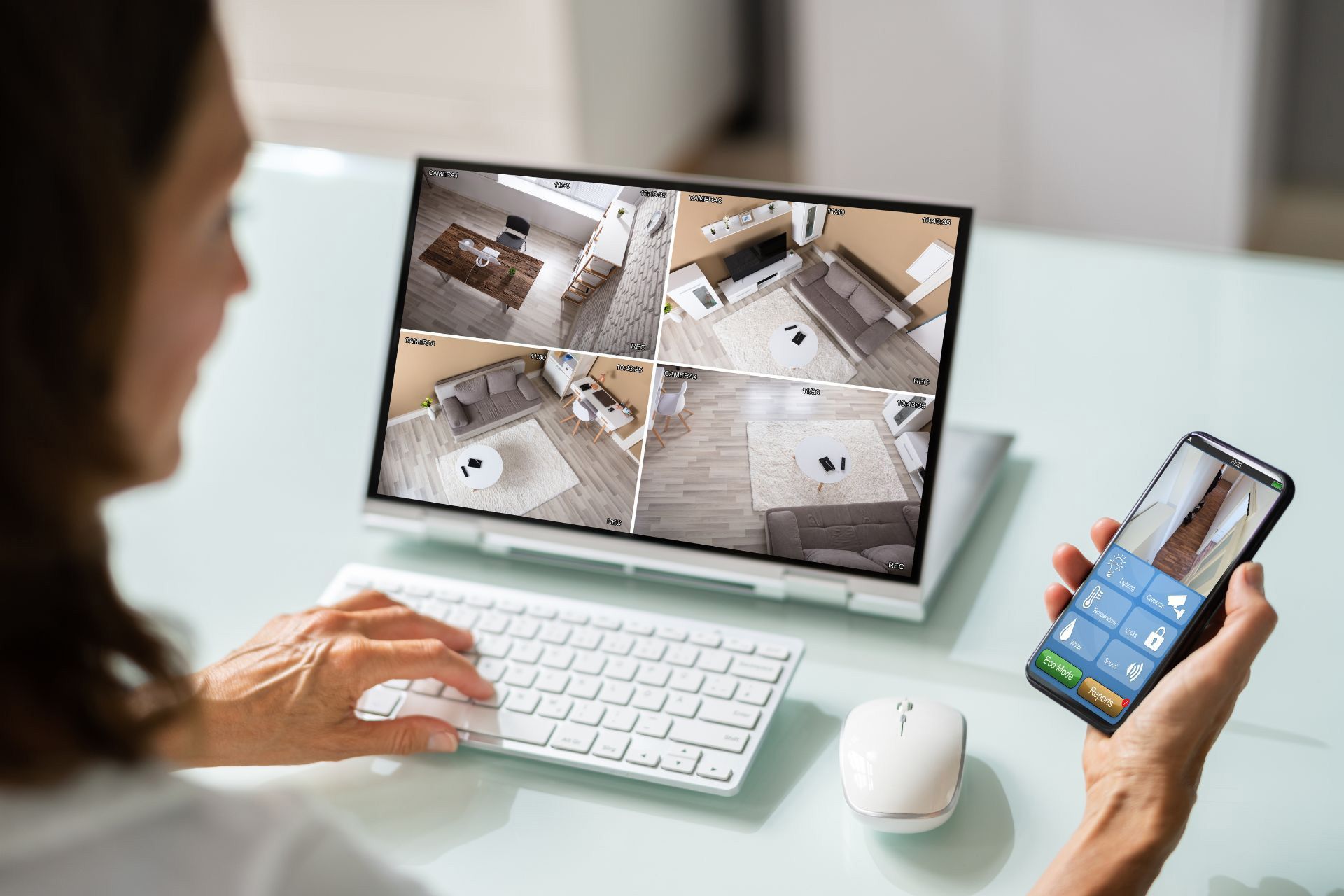
Image source: Canva
How Home Automation Intersects with Security Systems
Home automation and security systems truly shine in keeping you and your loved ones safe. A smart home security system allows you to remotely control and automate alarms, smart locks, and
smart cameras based on parameters you’ve set. They can also provide real-time alerts and automated responses to potential threats.
Benefits of Integrating Home Automation With Security Systems
Using automated security systems makes home protection more convenient and accessible, bringing homeowners complete peace of mind. Here are other ways they benefit you.
- Enhanced Safety—Automated door locks seal off entry points that burglars may access. Additionally, motion-detecting sensors can trigger security alarms if unusual activity is suspected.
- Convenience—Home assistants and apps with geofencing features can arm or disarm systems based on your location.
- Energy Efficiency & Reduced Costs—Security systems can be programmed or operated to turn smart lights on or off, so they’re only active when you’re at home. Not only does this reduce energy consumption and costs, but it also serves as a security feature (more on this later).
Real-Life Applications of Home Security and Automation Systems
Here are a few examples of how automated home security systems improve life at home:
- A
smart camera detects a shadowy figure closing in on the front lawn and porch of the house. The camera sends an alert to the owner’s phone while simultaneously turning an outdoor light on. The figure retreats.
- A stranger rings a
video doorbell. The homeowner—nestled in the comfort of their bed—watches the live feed on their phone. They can decide to unlock the door (or not) using their phone.
- Using a geofencing app, a homeowner arms their home security system to turn on when the last family member leaves the house.
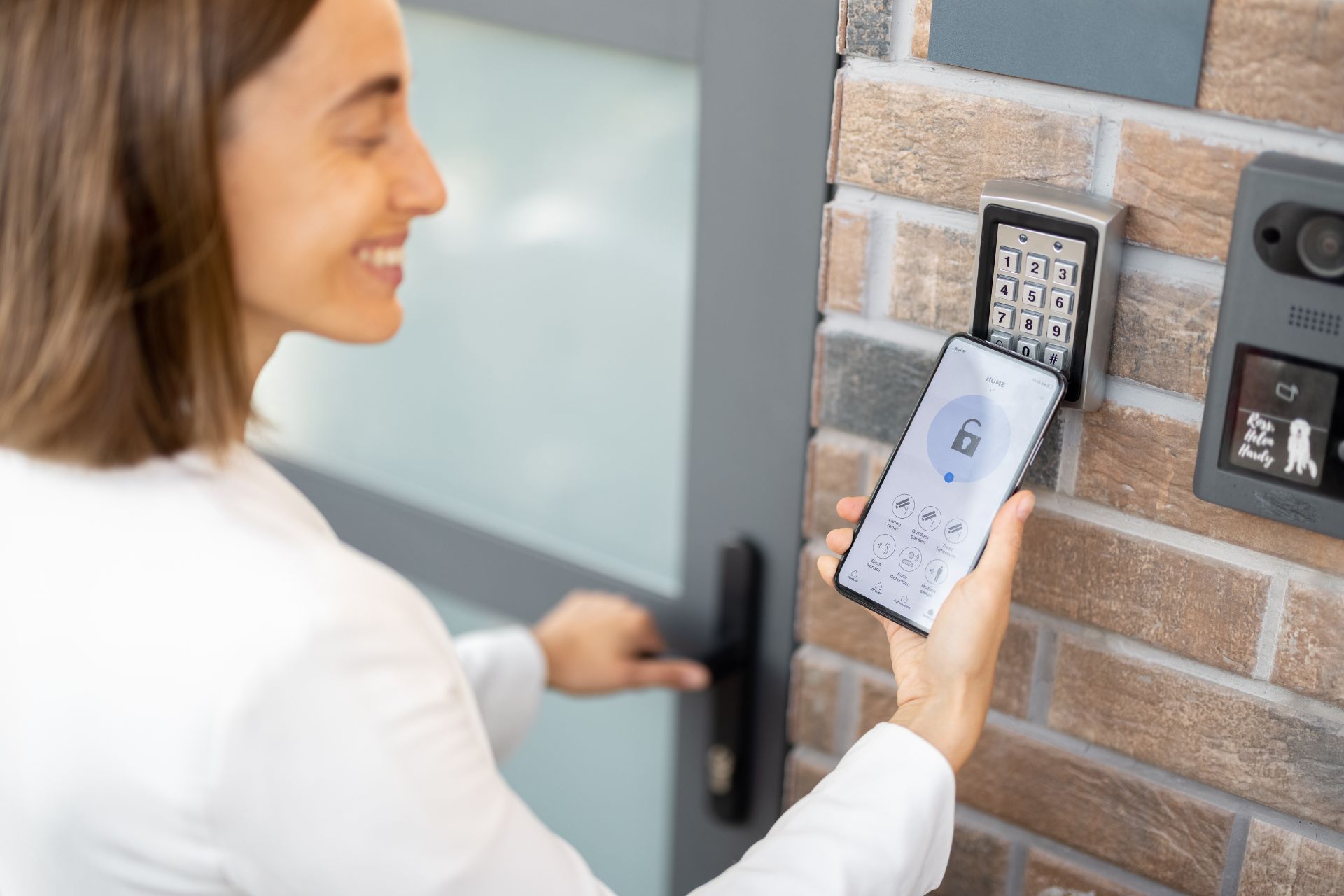
Image Source: Canva
Key Smart Home Features Designed for Security
Home automation security systems need a few components working in sync to protect your home completely. These devices should enable you to monitor and track potential threats, send alert warnings, and deter potential intruders. They must be able to seal your home off to prevent criminals from entering and provide access to 24/7 professional monitoring services.
Motion Detection Sensors
The purpose of a motion sensor is to detect and alert you to movement on your premises. They can also trigger an alarm if programmed.
Entry Sensors
A compliment to motion sensors is entry sensors. They monitor doors and windows and sound the alarm if opened by an unauthorized party.
Smart Security Cameras
A smart home security system is incomplete without a
smart camera. It’s advisable to have indoor and outdoor cameras with high-definition (HD) video feeds, night vision, and facial recognition. The latter helps cameras differentiate between people and animals (or objects) so you only get alerts for actual threats.
Learn more:
7 Types of Security Cameras for Your Home
Smart Locks
Physical keyholes and padlocks can be broken by determined burglars. Smart locks bolster the protection of your doors, ensuring that only you or a family member can lock or unlock them, whether it's with user-specific passcodes, Bluetooth connections, or mobile apps. You can lock these entry points remotely anywhere with your phone. As a bonus, smart locks eliminate the need to carry keys.
Video Doorbells
A
video doorbell does what its name implies—provides a live video feed of visitors at your doorstep, which you can see in real time. They also allow two-way communication so you can inquire who’s at the door, with some allowing you to trigger alerts based on motion detection. Popular brand options for video doorbells include Ring, which can be integrated with Alexa, and Nest, which has facial recognition abilities.
Smart Sensors for Environmental Hazards
Aside from burglary, theft, and vandalism, environmental hazards are another reason to bolster smart home security. These include silent killers such as carbon monoxide and destructive water leaks that can have devastating consequences if left unchecked. The
right sensors can detect these threats before they become active.
- Flood Sensors—These sensors detect water leaks before they cause property damage.
- ULC-certified Fire Detection Systems—These certified detectors protect you from fire-related hazards before they worsen.
- Carbon Monoxide Detectors—These detectors will alert you to toxic carbon monoxide emissions. When integrated with your HVAC systems, they can trigger safety measures to keep you safe until you vacate your premises.
If you’re upgrading your smart home security, strongly consider adding sensors with these features. Their quick detection and warning systems can protect your home and loved ones.
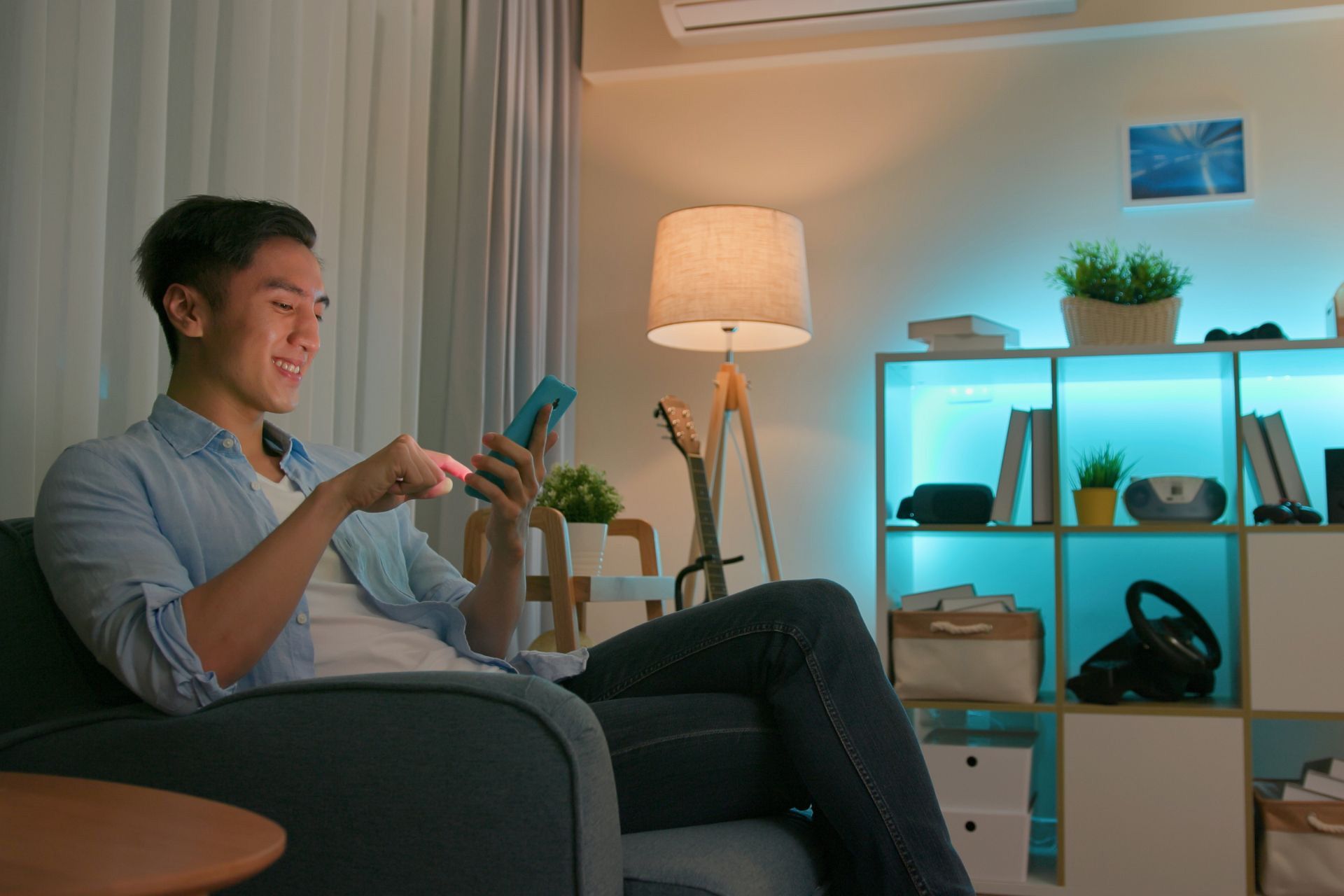
Image Source:
Canva
How Other Smart Home Devices Improve Home Safety & Security
Home automation security doesn’t rely on safety devices alone. Integration with other smart home technology improves home protection, keeping you and your loved ones safer.
- Smart Light Bulbs—These light fixtures turn on or off at scheduled times and adjust to the number of occupants in your house. They help deter intruders by giving the impression that your house is occupied
even if you’re away.
- Smart Plugs—These devices shut power off during a surge or malfunction, preventing electrical fires. They also allow you to operate appliances and lighting remotely, making potential burglars think you’re home.
- Smart Thermostats—A smart thermostat can protect your home from temperature extremes, preventing pipes from freezing or other situations that can lead to extensive damage and costly repairs.
Connectivity Options for Home Automation and Security Systems
The strength of your smart home security system largely depends on the strength of its connectivity. For starters, you need reliable, high-speed internet, and other connection options listed below to ensure your devices function properly.
- Wi-Fi—A Wi-Fi connection with a reliable internet service provider (ISP) is ideal for security devices like cameras and video doorbells.
- Zigbee & Z-wave—These low-powered protocols work well for sensors, locks, and lighting. They’re especially useful for establishing mesh networks to extend the range of these devices throughout the home.
- Bluetooth LE & Thread—These connections are great for applications like smart locks due to their low power consumption.
As advanced as they’ve become, wireless connections can fail. Connectivity issues due to network or hardware errors can render your home security system unreliable. Have a cellular and landline backup to maintain the connectivity of your devices in case of power outages or network shortages.
Why Upgrade to Smart Home Technology
A home automation and security system isn’t just a nice-to-have any more, nor is it just trendy technology. A smart home security system can dramatically improve your safety, security, and overall home experience. More than that, here’s what building a home security and automation system brings you and your family:
- Peace of Mind—A smart home security setup eases your safety concerns through real-time monitoring, alerts and responses, so you don’t have to guess whether you’re safe or need to act.
- Convenience & Comfort—With a button, you can program smart devices to lock, turn on/off, or sound warnings with specific triggers, saving you time and effort.
- Energy Efficiency & Cost Savings—Smart home devices like smart thermostats and lights that only operate when scheduled cut energy usage and costs.
- Personalization—You can tailor a home automation and security system to focus on specific homeownership concerns such as security or energy efficiency.
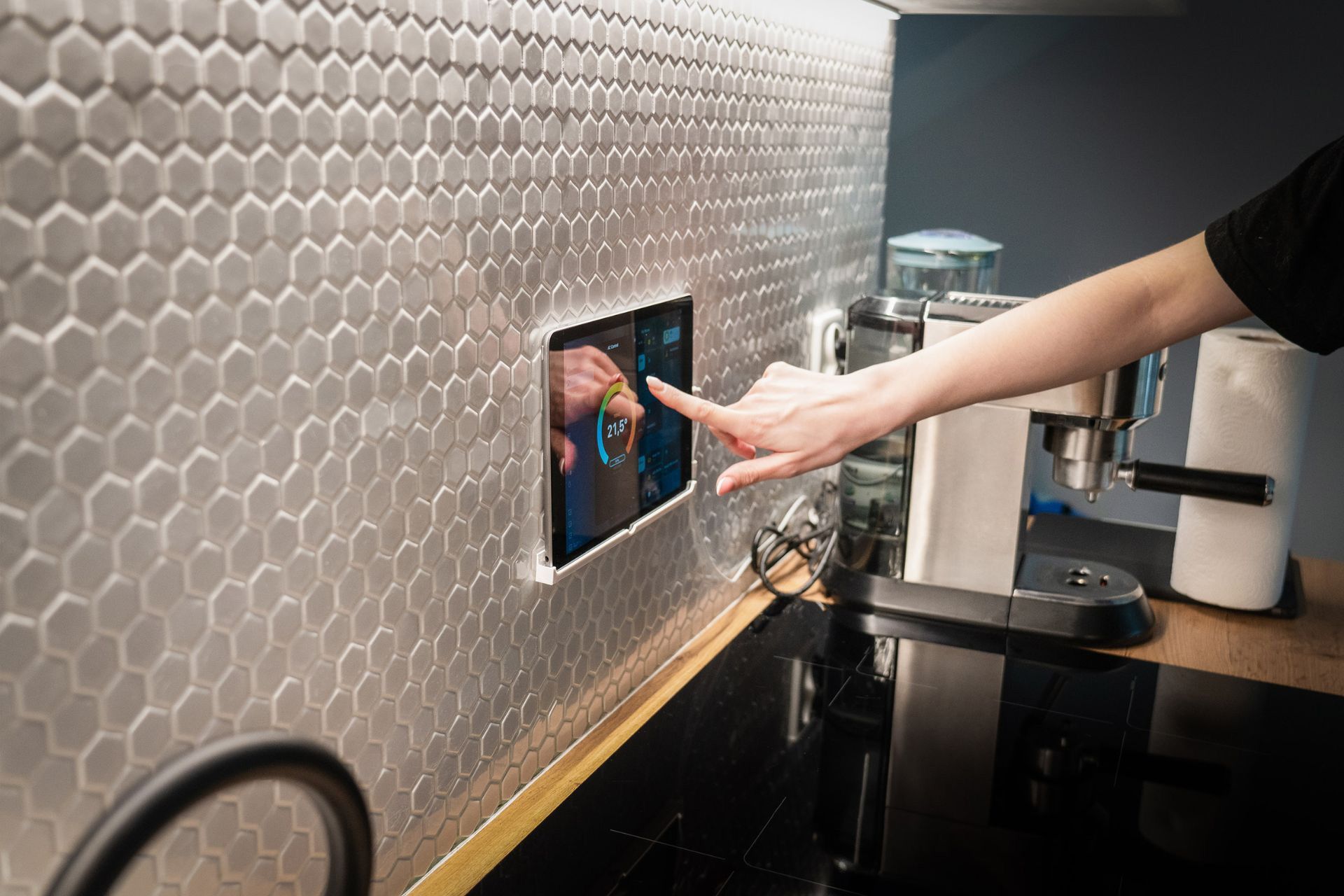
Image Source: Canva
How to Build Your Own Smart Home with Security in Mind
With so many
smart security system options, building your home security and automation system can be overwhelming. The key is to have a plan that’s easy to follow. A structured plan condenses the process into digestible steps you can execute from start to finish. To start, follow these steps to building a home automation and security system for your property:
- Start with one smart device. That gives you an affordable entry to smart home automation systems and a starting point to which you can add more devices.
- Choose a central ecosystem to integrate with your chosen device such as Amazon Alexa, Google Assistant, or Apple HomeKit. Before choosing one, make sure the ecosystem is compatible with your device. Also, use a central app or hub that can support multiple device connections.
- Next, select a second device to complement the first one you chose. For a smart camera, you could add motion sensors or a video doorbell for added security.
- Identify a routine to automate. Think of what you can’t do while you’re away from home, like self-monitoring. Program your smart systems to send you alerts when you’re at work or get professional monitoring services to keep an eye on your home 24/7.
- Think of other devices you can add to your first two selections. A helpful way to carry this out is to focus on one area at a time (i.e., outdoors, living room).
You don’t have to build a perfect home automation and security system right away. You can always add new devices when the need arises.
Challenges and Solutions in Smart Home Automation and Security
While setting up your smart home security system and its adjacent components, you may encounter some technical difficulties. These can involve the devices themselves (hardware) or their network connections.
- Connectivity Problems—Smart devices may lose connection if Wi-Fi signals are weak or the security protocols are incompatible.
- Cybersecurity Risks—IoT-enabled devices continue to get more secure, but they’re not 100% immune to hacks or data breaches.
Here’s how you can improve your home automation systems’ security:
- Use the protocols suggested in the owner’s manuals when creating device connections.
- Enable encryption such as WPA3 for Wi-Fi networks and
create strong passwords for all devices and accounts—no 12345s!
- Create a separate, dedicated network for your smart home security system and related devices. Don’t use existing networks that have personal data on them.
- Update your devices when prompted since doing so strengthens their security features.
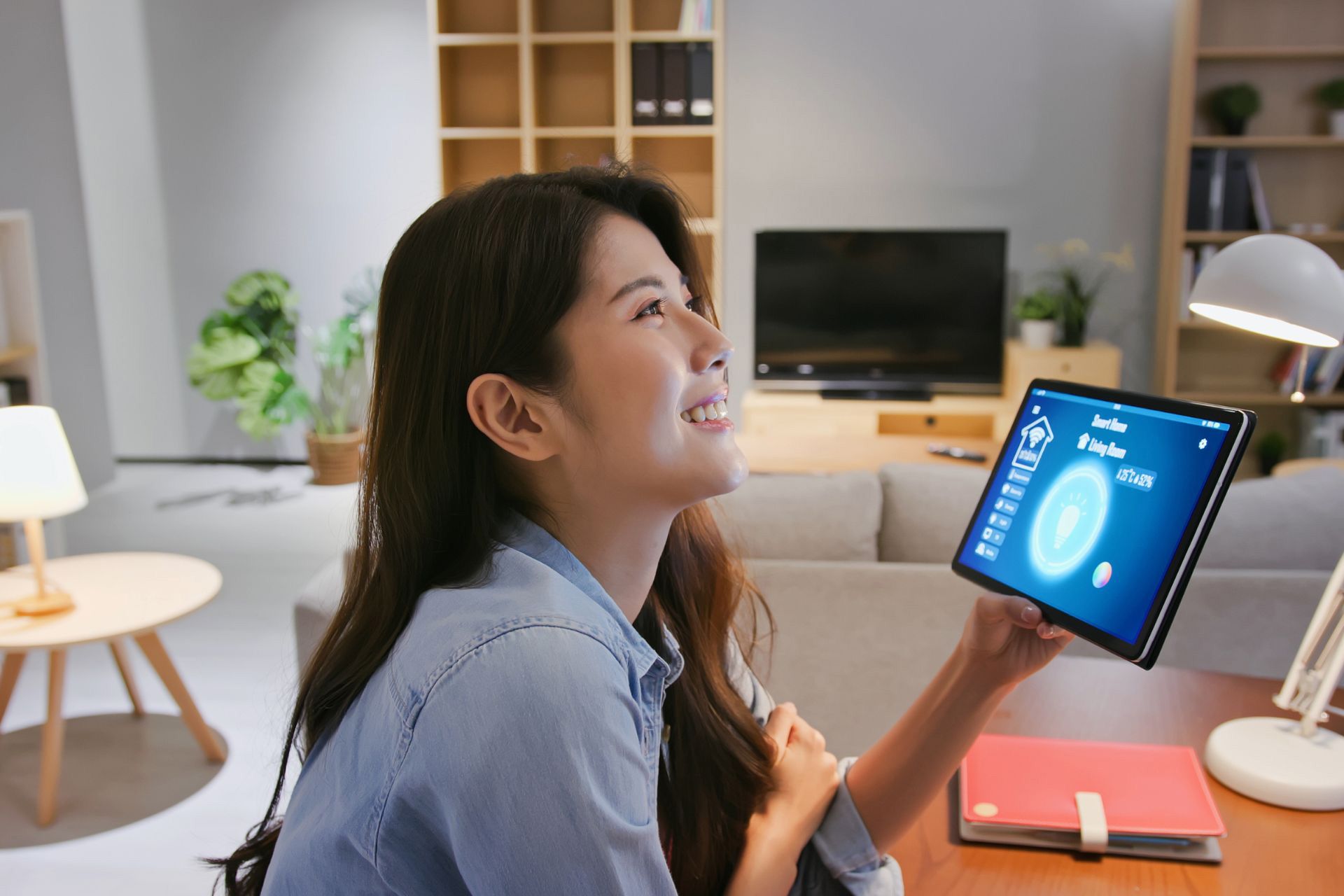
Image Source: Canva
The Future of Smart Homes and Home Automation Security
Home automation and smart home technology are becoming more powerful. New devices offer a greater ability to help you stay safe, reduce energy consumption, and feel cozy.
Smart home devices are increasingly using AI to learn user habits, so they can adjust their performance to match a homeowner's routine. Devices like smart thermostats and smart lights can use AI to adjust brightness and temperatures based on how you operate them while present versus when you’re away. They self-regulate and adjust their output to operate only when necessary.
Voice control is also getting sharper. They can better understand nuanced contexts and muffled speech, and carry out complex conversations thanks to advancements in natural language processing (NLP).
Predictions of Home Automation and Security System Advancements
- More
universal protocols like Matter that connect smart devices made by different manufacturers will be released, reducing the need for multiple hubs.
- Biometric authentication such as fingerprint scanners, facial recognition, and voice IDs will become staple security features in smart devices.
- Smart devices will become more capable of adjusting home settings based on your daily routines, weather forecasts, and recurrent alerts.
Build a Fortress With Your Home Automation and Security System
Modern homeownership brings its share of concerns. Crime risks, environmental hazards, maintenance costs—there’s much to consider. Throw in a busy job, family obligations, and daily errands, and counteracting them all can seem challenging.
A home automation and security system with the right device configuration protects you and your family. PasWord Protection can get you started on your home automation security systems with professional installation.
Serving Ontario homes for over 60 years, we have the home security and automation expertise you and your loved ones can rely on. From indoor and outdoor cameras to video doorbells, our systems integrated with our mobile app ensure your home is protected around the clock.
Make securing your home easier.
Get in touch with us for professional smart home security and monitoring services you can depend on!


